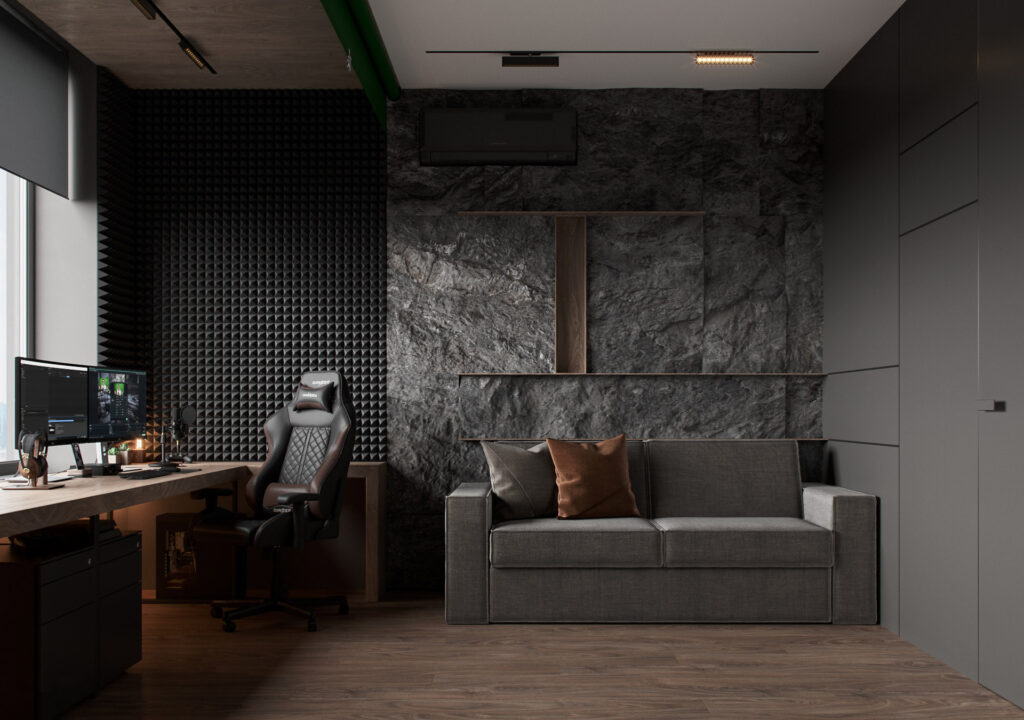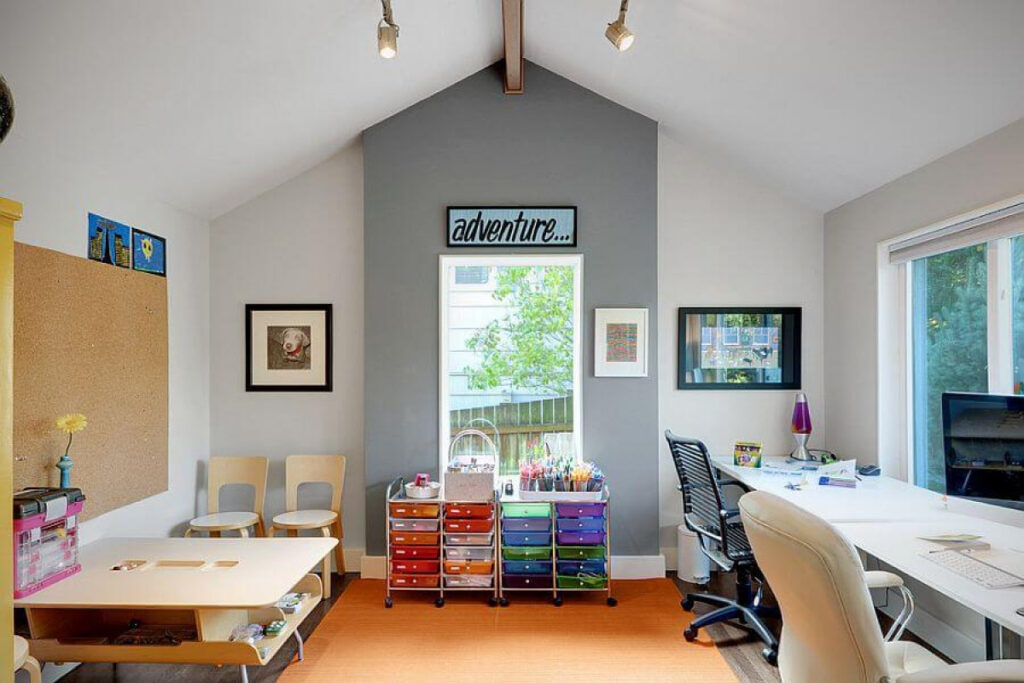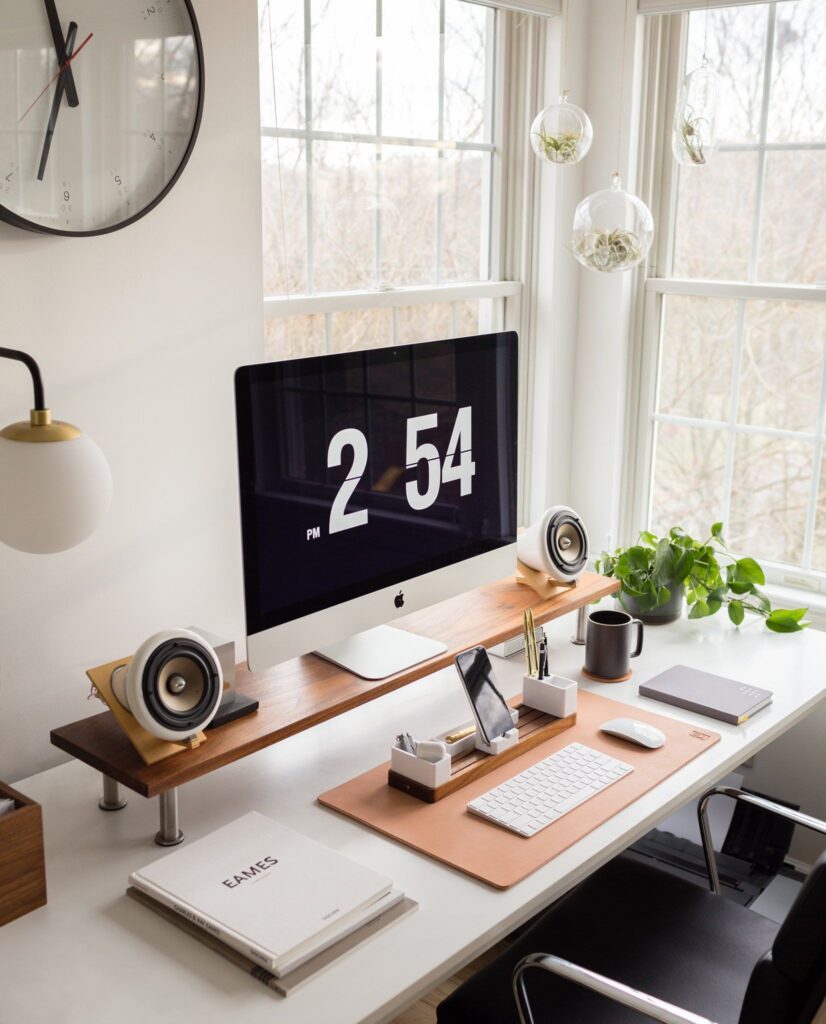For a brief moment in time, summer 2020 or thereabouts, it looked as though the concept of office life was dead and gone. Pre-pandemic, the average office worker spent just 5% of their working time at home. By the end of spring 2020, that figure had rocketed to 60% as office buildings around the world closed their doors.
The transition went better than expected. Video conferencing platforms kept the show on the road and, with no other choice available, people largely got on with it. Remote or hybrid workers may be putting in longer hours, but they are happier, more productive, and of course safer. For many reasons, there will always be a need for physical office space but if you haven’t already – literally – got the memo, WFH is also here to stay.
This has placed the spotlight on what used to be a rather unfashionable feature of interior design: the home office. The prominent US architect David Hart says that before Covid, only 10-15% of the apartments his firm was building had some kind of dedicated office space. From here on in, he says, that figure will be more like 75%. The humble home office has become an extremely coveted piece of real estate.
Here at O’Connors of Drumleck, we have seen a surge of inquiries from clients looking to install a home office. The days of sharing a kitchen table or carving out a workspace in the living room were fine for a while, but now it’s time for something more permanent. With hybrid working set to continue long after the pandemic has passed, this is a wise move – but one that requires careful planning.

If you have decided to create an office at home, your first consideration is where to put it. This will likely depend on the way you work, the kind of work you do, and the needs and lifestyles of the people you live with. Needless to say, it will also depend on your home, where some will be more blessed with space, flexibility and choice than others. Wherever your home office fits best, our design team can help you create the perfect space.
When it comes to design and décor, a useful starting point is to think about the purpose of your home office. If this is a dedicated space for working, and nothing else, you may find it helpful or stimulating to create a look and feel that is completely different to what is going on in the rest of the home.
However, if your home office doubles, or even triples, up as a part-time admin centre, a study/homework zone for kids, a movie room when the main screen is not available, or some other purpose, then it might make more sense to match the design theme with other rooms in the home.

Once you have broadly settled on a design, there are a number of practical considerations that will guide your office development project. The most important of these revolve around your tech needs: connectivity and charging, internet source, printing requirements, storage, monitors and the other pieces of kit you will need.
The final piece of the jigsaw will be how to furnish the room. This is an opportunity to create a bespoke working space that is ergonomically tailored to your individual needs. We specialise in one-off creations and our design team would be happy to discuss how to optimise your home office in terms of desk, chair, storage facilities, lighting options and other features.

Lighting is a key point here, in particular using as much natural light as possible to enhance and blend with the various furnishings and other elements in the room. Natural light can be cleverly combined with purpose-designed lamps and beams to frame certain aspects of the office or create ‘hotspots’ where extra illumination is needed.
By taking a holistic approach to the development of your home office, you will be able to create a space that is both aesthetically pleasing and professionally motivating; a room in which you feel calm, concentrated and productive at all times. If you are considering a home office, we would love to listen to your plans.

